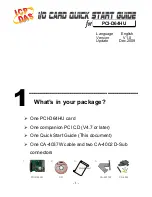
ENGINEERING MANUAL OF AUTOMATIC CONTROL
AIR HANDLING SYSTEM CONTROL APPLICATIONS
257
During unoccupied periods, anytime the top floor west zone
perimeter space temperature is greater than 25
°
C and the OA
temperature is less than 22
°
C and the OA dew point is less than
16
°
C, the night purge program shall start. When the night purge
program starts, AHUs 9 through 16 (provided their west zone
space temperatures are greater than 23.5
°
C) shall start, and the
OA and exhaust fans shall start. When an AHU runs in the
night purge mode, its OA damper shall position full open. When
the OA fan runs in the night purge mode, its duct static pressure
setpoint shall be reset to a value 50% above the normal
maximum setpoint. AHU fans running in the night purge mode
shall stop when their noted space temperature drops to 23.5
°
C.
Anytime the night purge program runs for one minute and
any of AHUs 9 through 16 are off, AHU’s 8 through 1 shall
start respectively on a one-for-one basis (provided their west
zone space temperatures are greater than 23.5
°
C). Anytime all
fans shut down in the night purge mode, the night purge program
mode shall end.
Anytime the supply fan runs, the return fan shall start and
the control system shall be enabled. Also, anytime the supply
fan runs during scheduled occupancy periods the exhaust fan
shall start.
At the scheduled occupancy time, each AHU OA damper
control loop shall be enabled under EPID control with a start
value of 50 and a ramp duration of 400 seconds. Each AHU
OA damper shall modulate to maintain its OA airflow setpoint.
The supply fan loading shall be under EPID control with a
start value of 20% and ramp duration of 150 seconds. The supply
fan shall load to maintain the duct static pressure setpoint.
The SA temperature shall be under EPID control with a start
value of 50% (at which point the hot and chilled water valves
are both closed) and a ramp duration of 120 seconds. The hot
and chilled water valves shall be modulated in sequence to
maintain the SA temperature setpoint.
Anytime the optimum start perimeter zone space temperature
sensor is less than 21
°
C at start-up time, the SA temperature
setpoint shall be 32
°
C until the RA temperature rises to
23
°
C, at which time the SA temperature setpoint shall be
lowered to 13
°
C. The EPID shall be invoked at the switching
of the setpoint to 13
°
C with a start value of 50 and a ramp
duration of 180 seconds.
EXPLANATION:
With VAV fan systems, operation during unoccupied periods
should be based on minimum energy cost (not minimum on-
time). Ideally, for a dual chiller building, the VAV box airflow
would be regulated to run one chiller at its most efficient
operating point. At this point the AHU fan would draw a small
portion of its full-load amperage, good dehumidification would
occur, and pumping energy may be reduced. In the night purge
mode of operation, the objective is to supply a maximum amount
of OA to the AHUs, and to direct it to the warm areas of the
building. Reducing the AHU airflow and increasing the OA
airflow should result in the supply airflow being a significant
proportion OA. If IAQ requirements dictate a prepurge cycle,
this operational mode should suffice then also, but would be
staged by time rather than temperature.
PSYCHROMETRIC ASPECTS
In the following chart it is assumed that:
1. Outdoor air condition is 35
°
C DB and 26
°
C WB.
2. RA condition is 25.5
°
C DB and 14.5
°
C WB.
3. Coil leaving air temperature 10
°
C.
4. 80% RA.
The following results are obtained:
Item
No.
Explanation
1
RA mixes with 20 percent (minimum position)
outdoor air to obtain mixed air condition.
2
Air entering the coil is cooled along a line of
constant moisture content until saturation is
approached. Near saturation the moisture con-
tent is reduced as the air is cooled. This process
involves both latent and sensible cooling.
3
Mixed air is cooled and dehumidified by
cooling coil to obtain cooling coil leaving air
condition.
4
Reheat coils and/or space internal load heats
air to 25.5
°
C DB and 14.5
°
C WB.
C3266
RA 26
°
C DB,
14
°
C WB
OA 35
°
C DB,
26
°
C WB
15.8
°
C DB
1
2
3
4
COIL DISCHARGE
10
°
C DB, 8
°
C WB
COOL
SPACE LOAD
Summary of Contents for AUTOMATIC CONTROL SI Edition
Page 1: ...AUTOMATIC CONTROL for ENGINEERING MANUAL of COMMERCIAL BUILDINGS SI Edition ...
Page 4: ...ENGINEERING MANUAL OF AUTOMATIC CONTROL iv ...
Page 6: ...ENGINEERING MANUAL OF AUTOMATIC CONTROL vi ...
Page 46: ...ENGINEERING MANUAL OF AUTOMATIC CONTROL CONTROL FUNDAMENTALS 36 ...
Page 66: ...ENGINEERING MANUAL OF AUTOMATIC CONTROL PSYCHROMETRIC CHART FUNDAMENTALS 56 ...
Page 128: ...ENGINEERING MANUAL OF AUTOMATIC CONTROL ELECTRIC CONTROL FUNDAMENTALS 118 ...
Page 158: ...MICROPROCESSOR BASED DDC FUNDAMENTALS 148 ENGINEERING MANUAL OF AUTOMATIC CONTROL ...
Page 208: ...ENGINEERING MANUAL OF AUTOMATIC CONTROL BUILDING MANAGEMENT SYSTEM FUNDAMENTALS 198 ...
Page 493: ...INDEX ENGINEERING MANUAL OF AUTOMATIC CONTROL 483 INDEX ...
Page 506: ...ENGINEERING MANUAL OF AUTOMATIC CONTROL INDEX 496 NOTES ...
Page 507: ...INDEX ENGINEERING MANUAL OF AUTOMATIC CONTROL 497 NOTES ...
Page 508: ...ENGINEERING MANUAL OF AUTOMATIC CONTROL INDEX 498 NOTES ...
Page 509: ...INDEX ENGINEERING MANUAL OF AUTOMATIC CONTROL 499 NOTES ...
Page 510: ...ENGINEERING MANUAL OF AUTOMATIC CONTROL INDEX 500 NOTES ...
Page 511: ...INDEX ENGINEERING MANUAL OF AUTOMATIC CONTROL 501 NOTES ...
Page 512: ...ENGINEERING MANUAL OF AUTOMATIC CONTROL INDEX 502 NOTES ...
















































